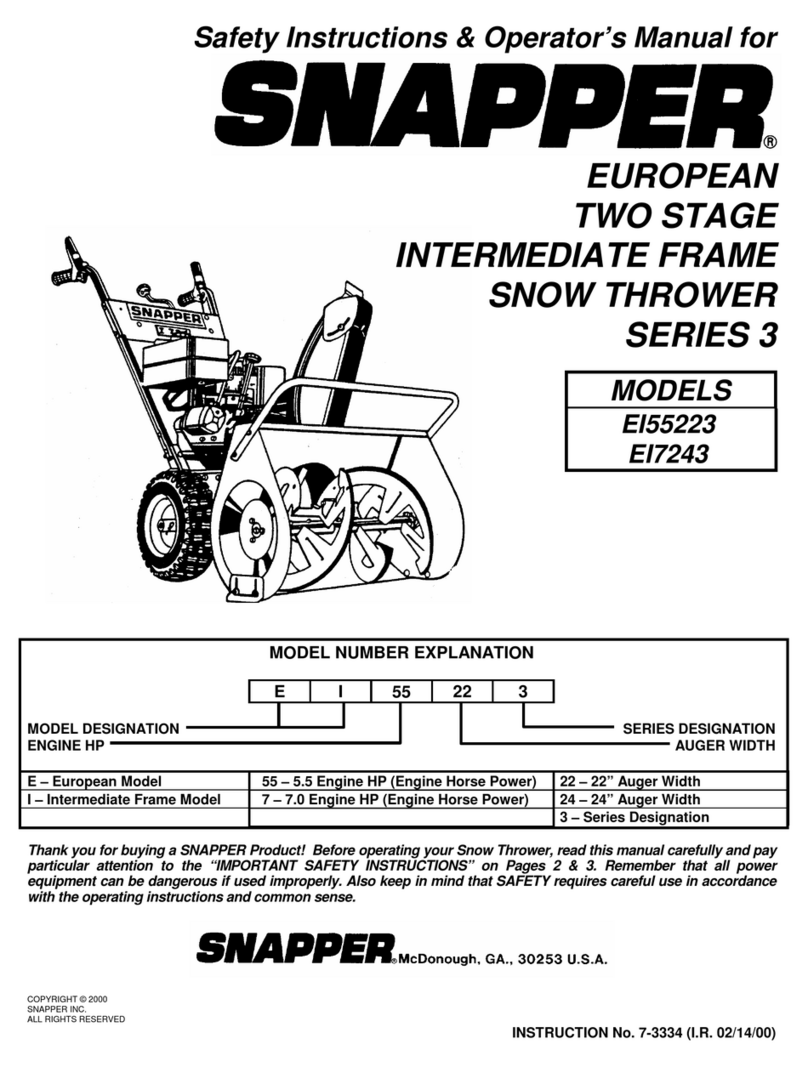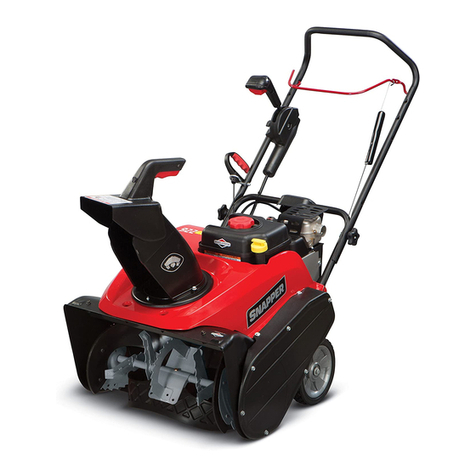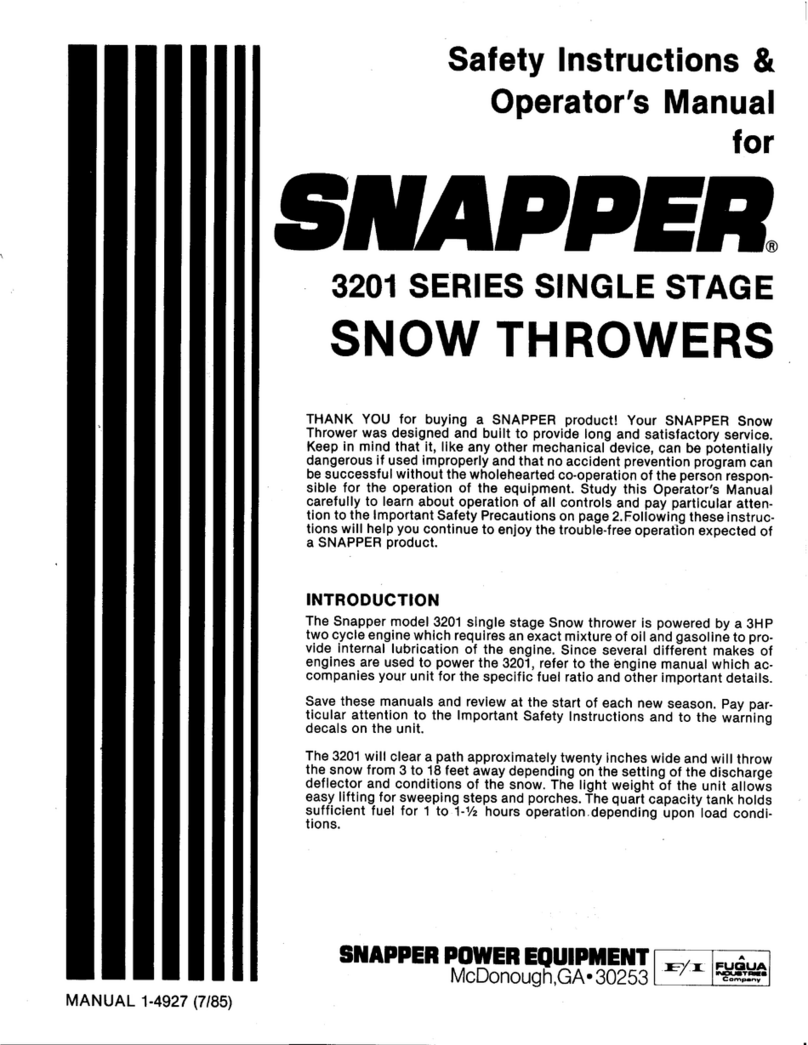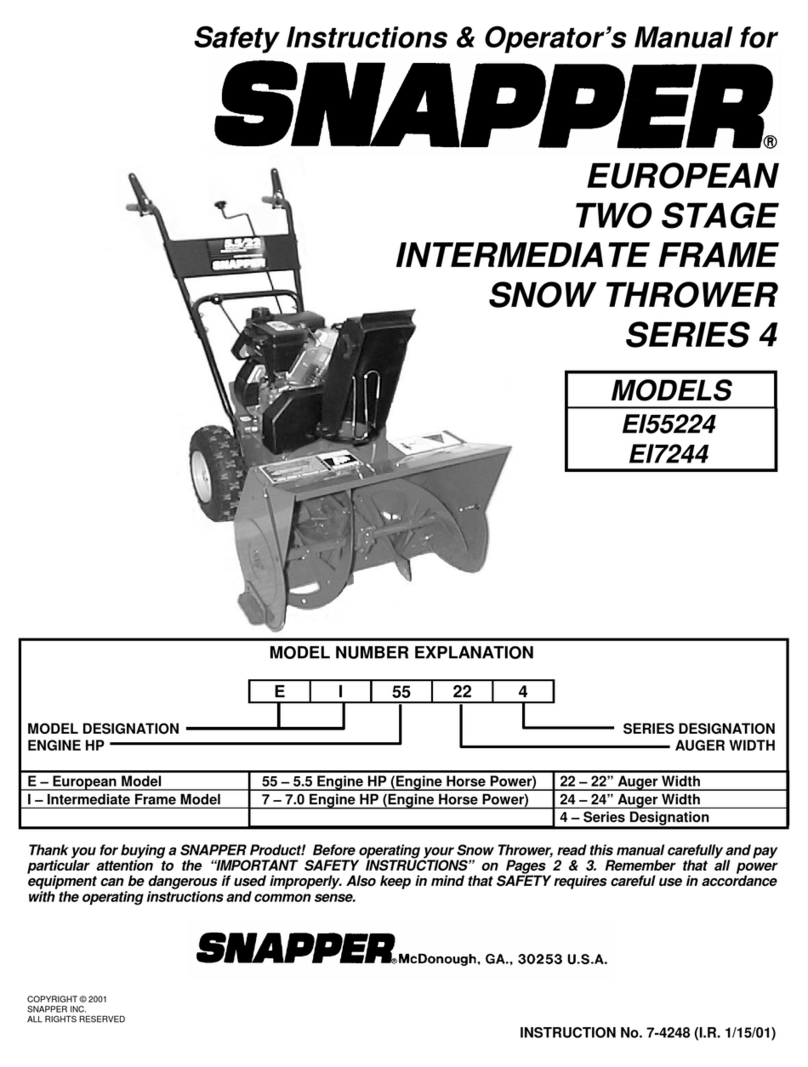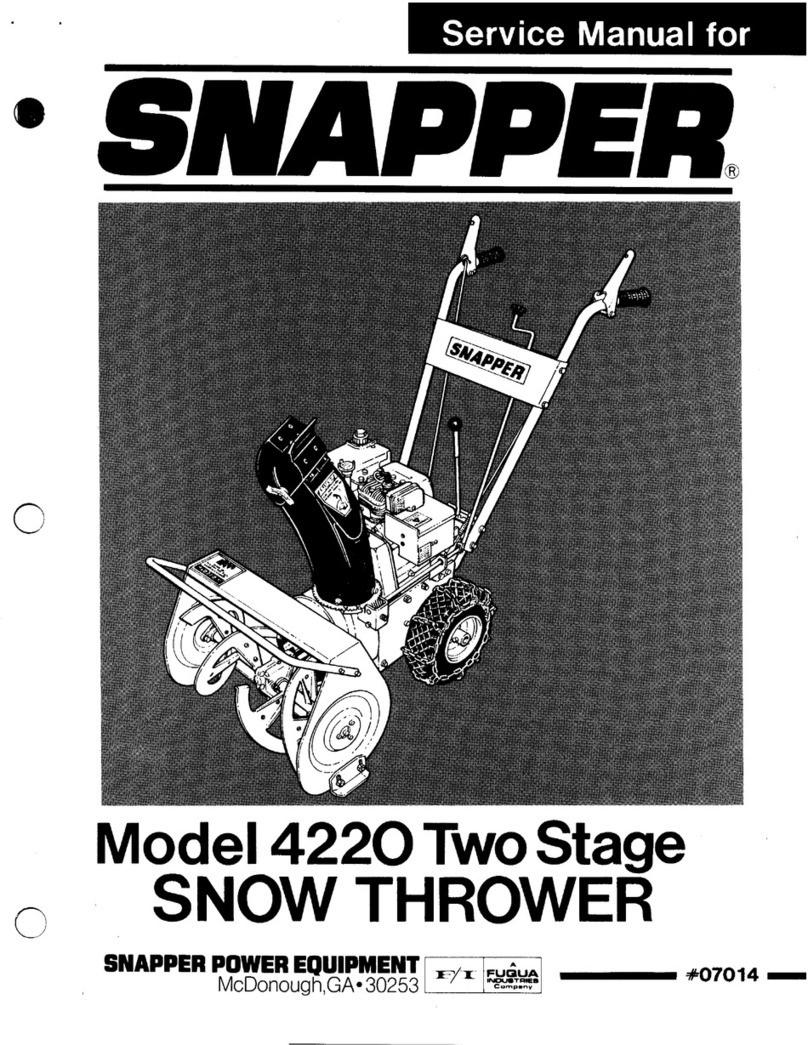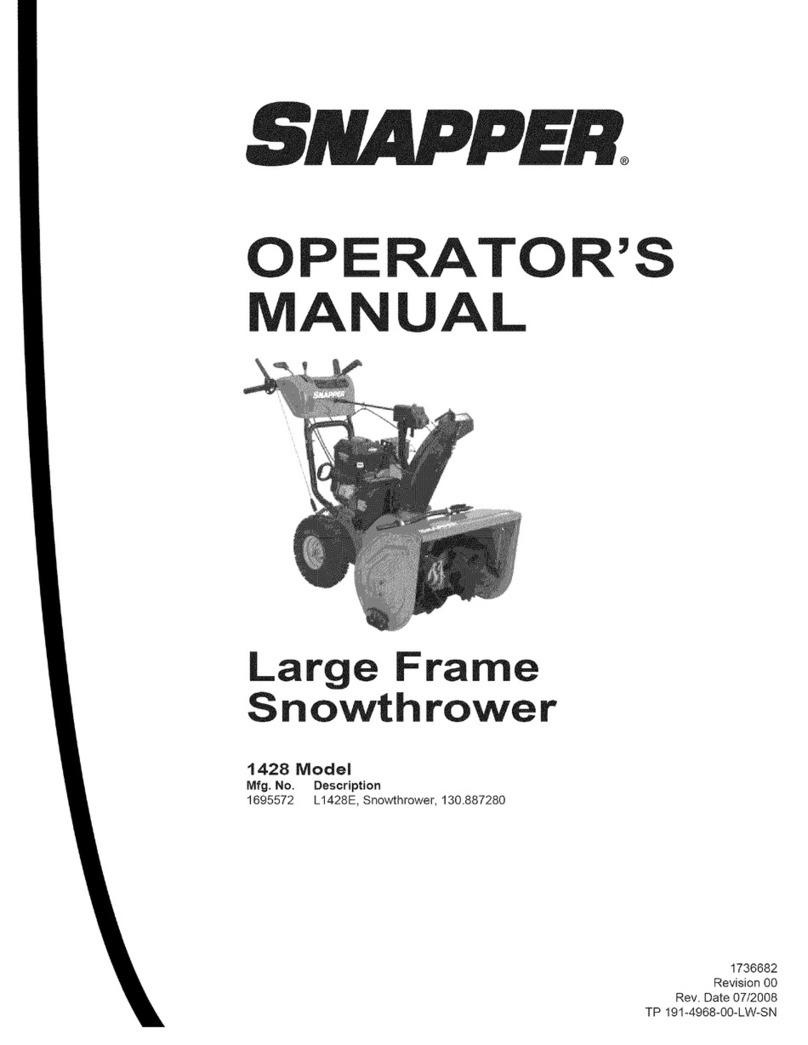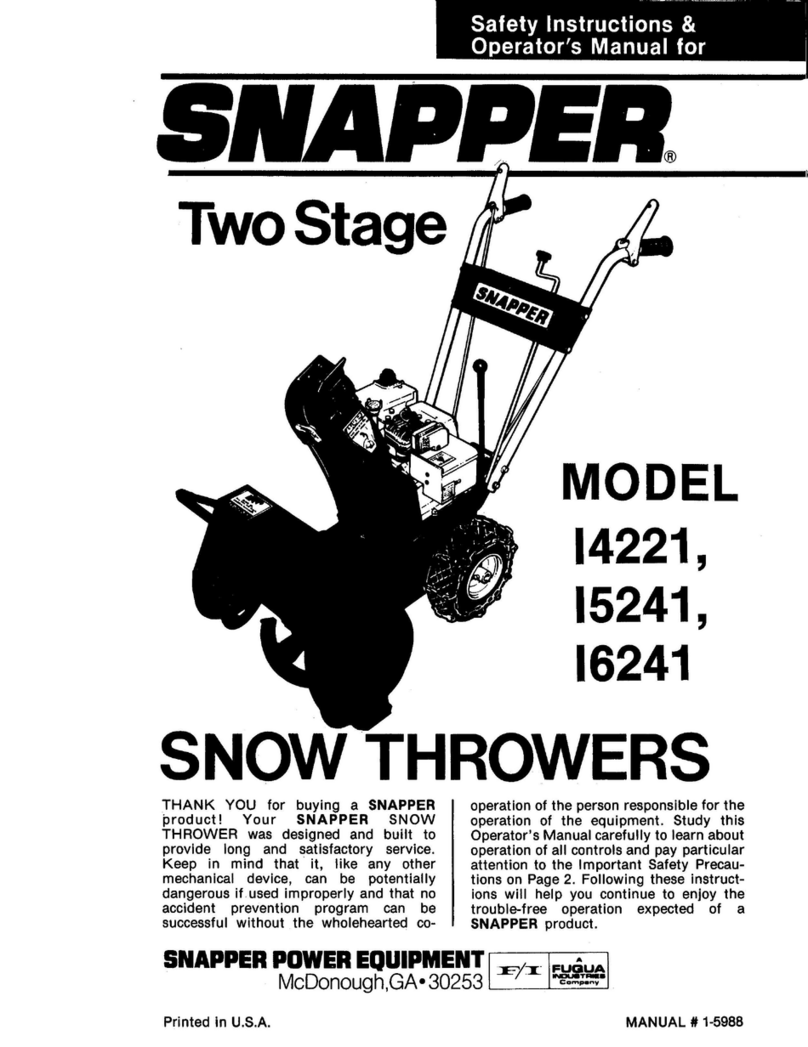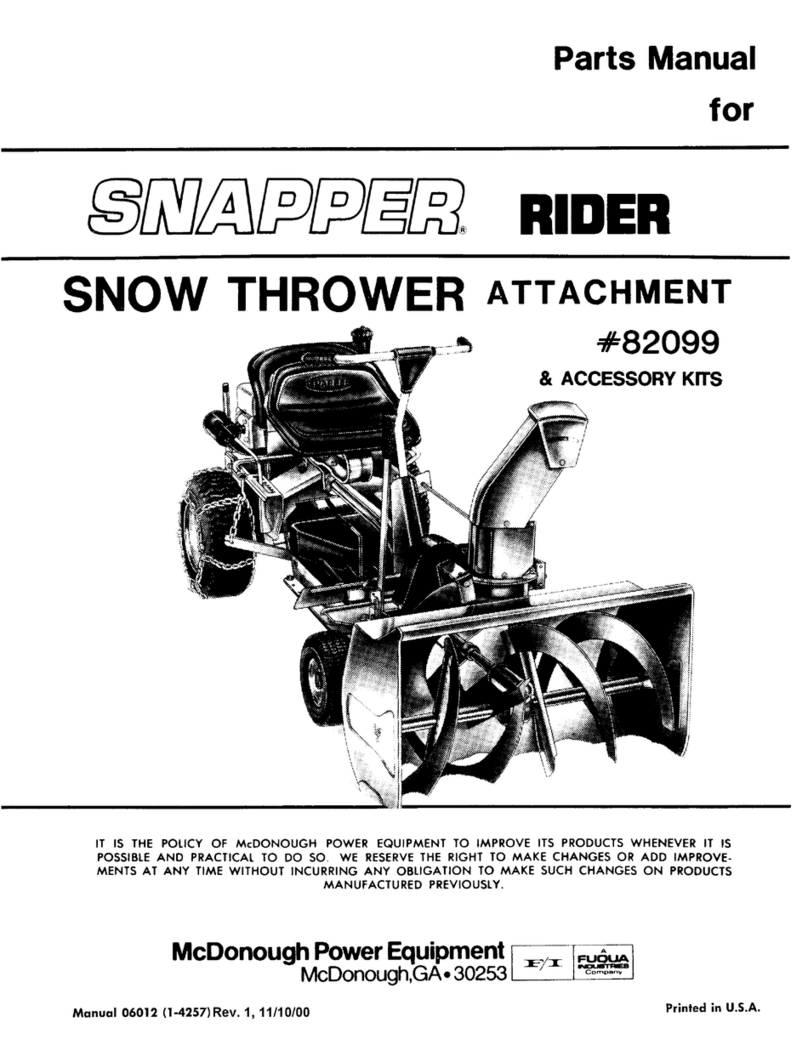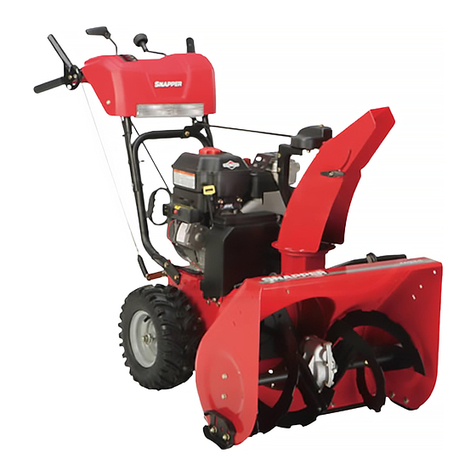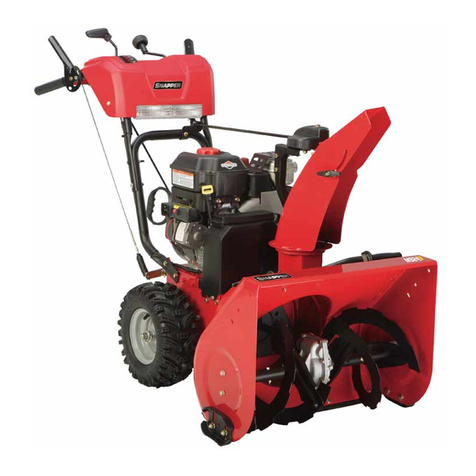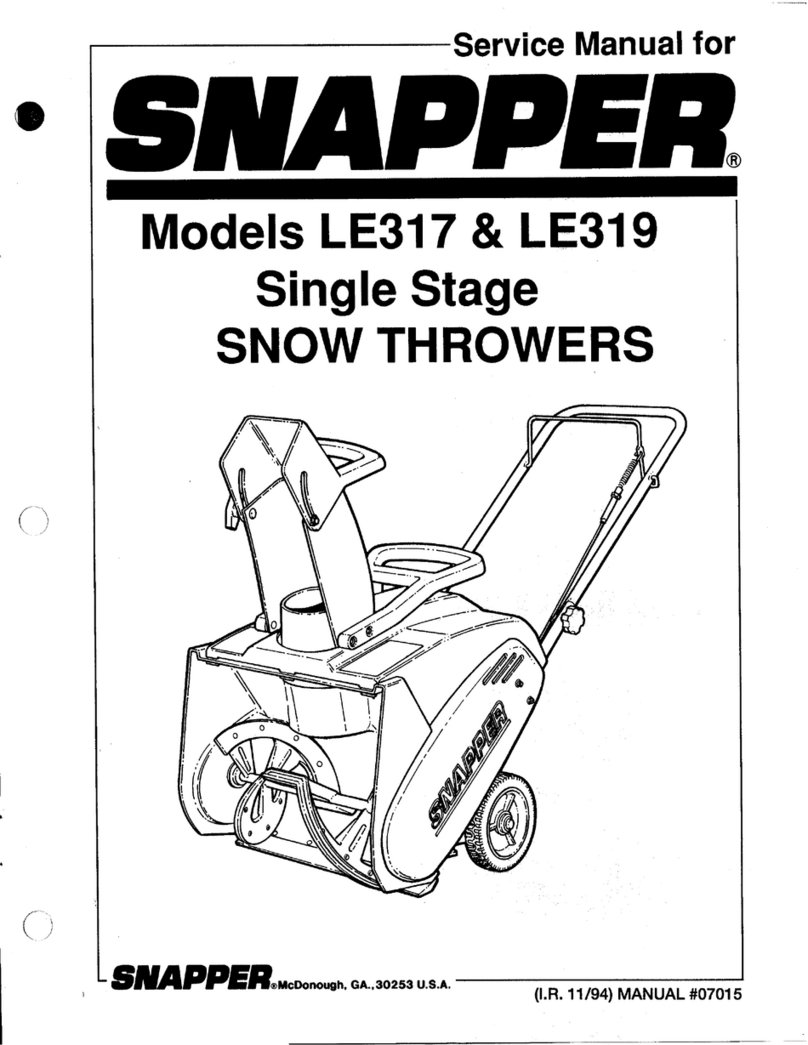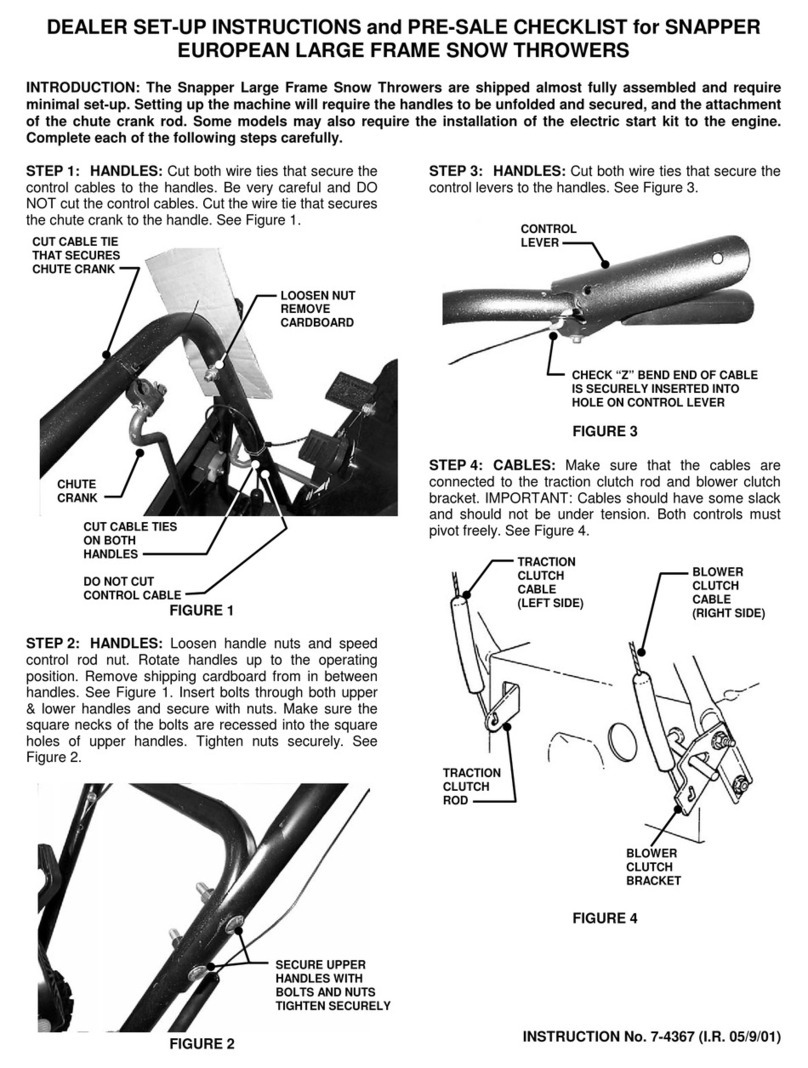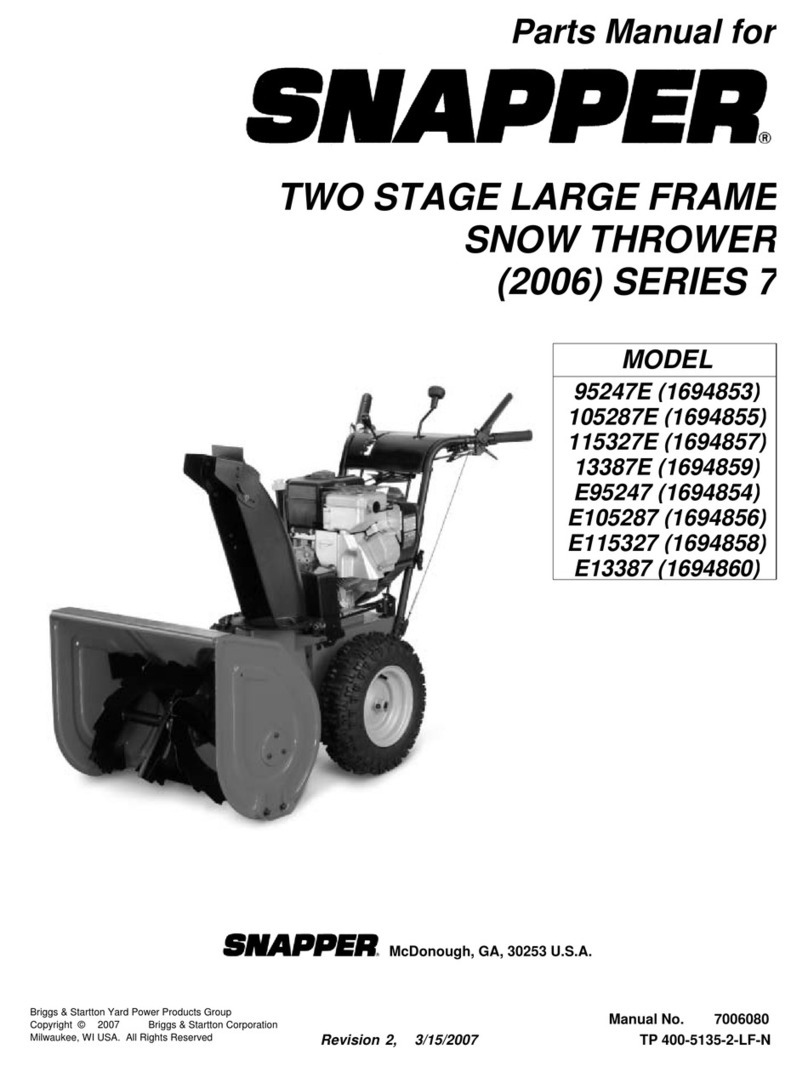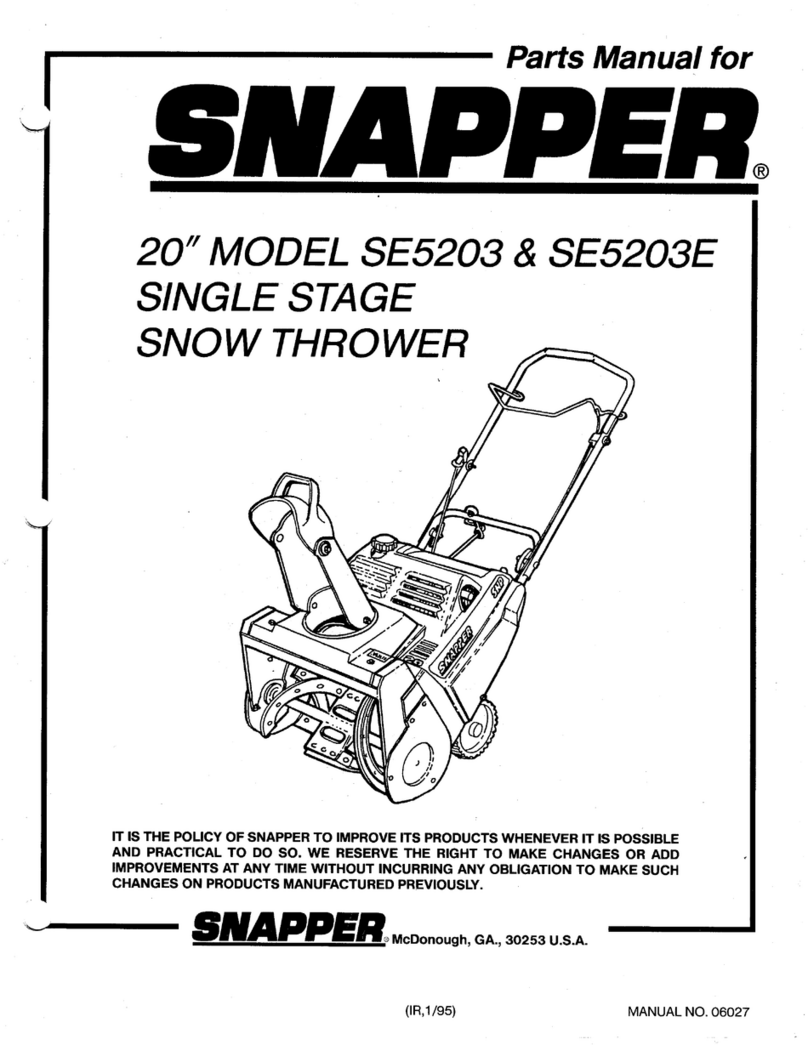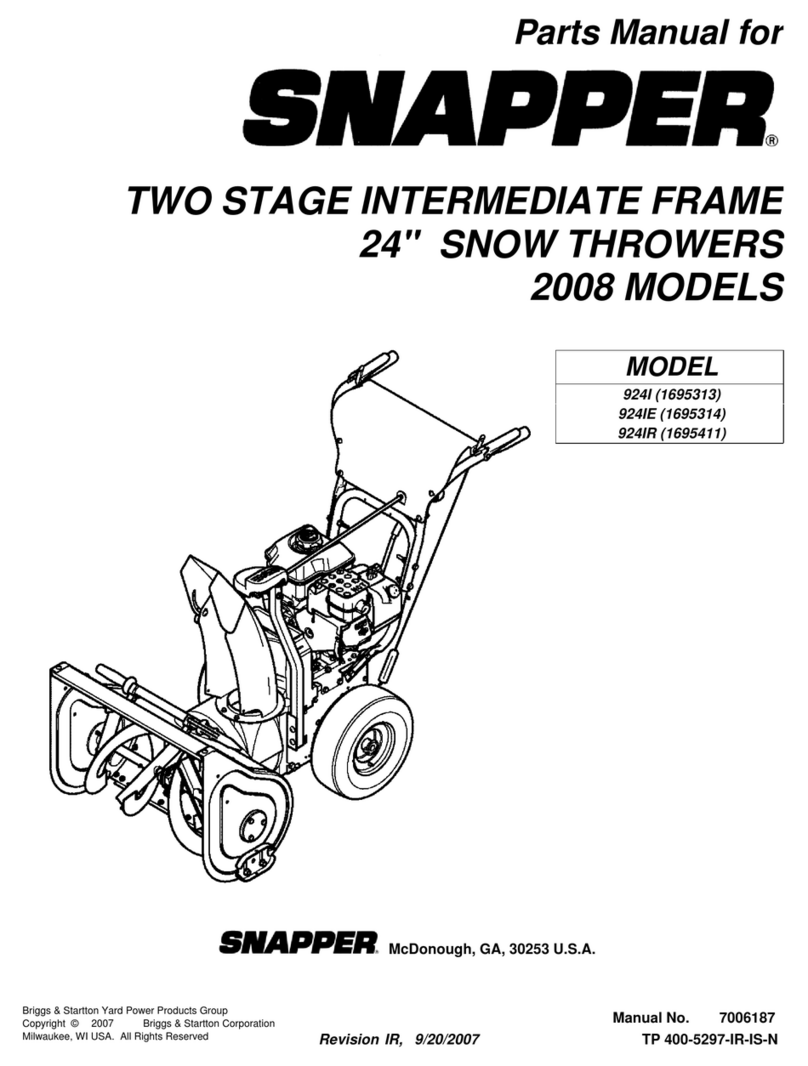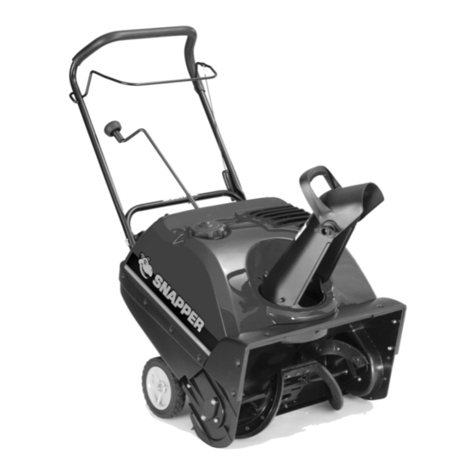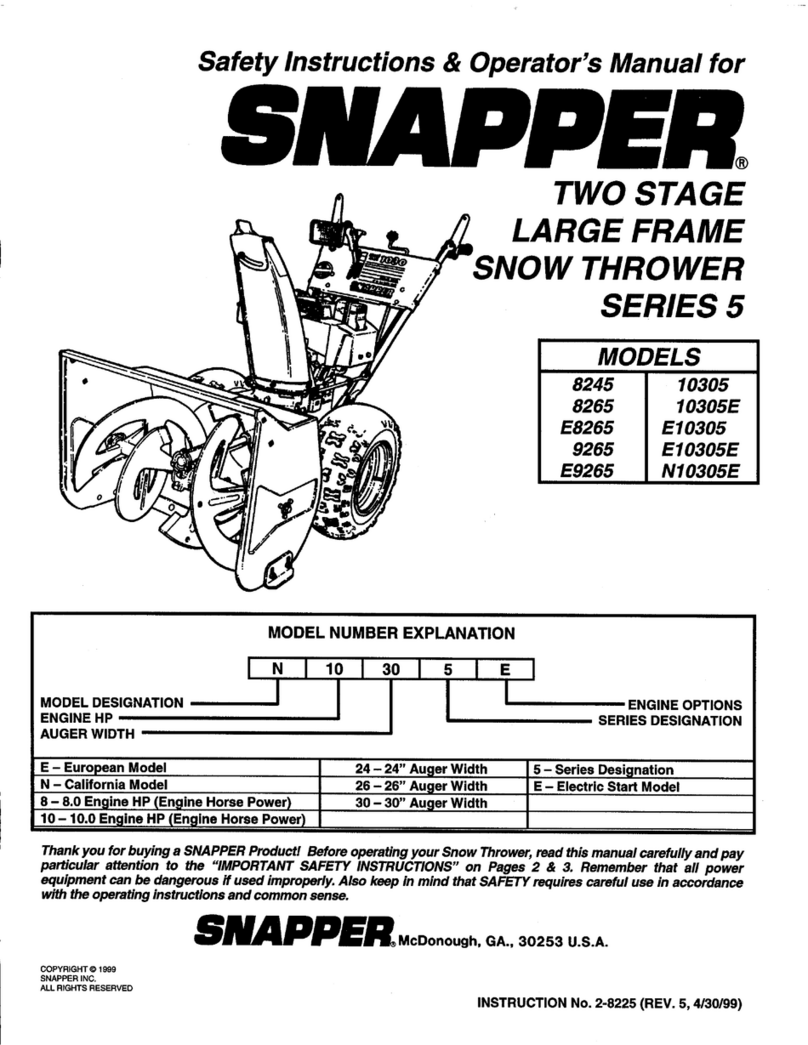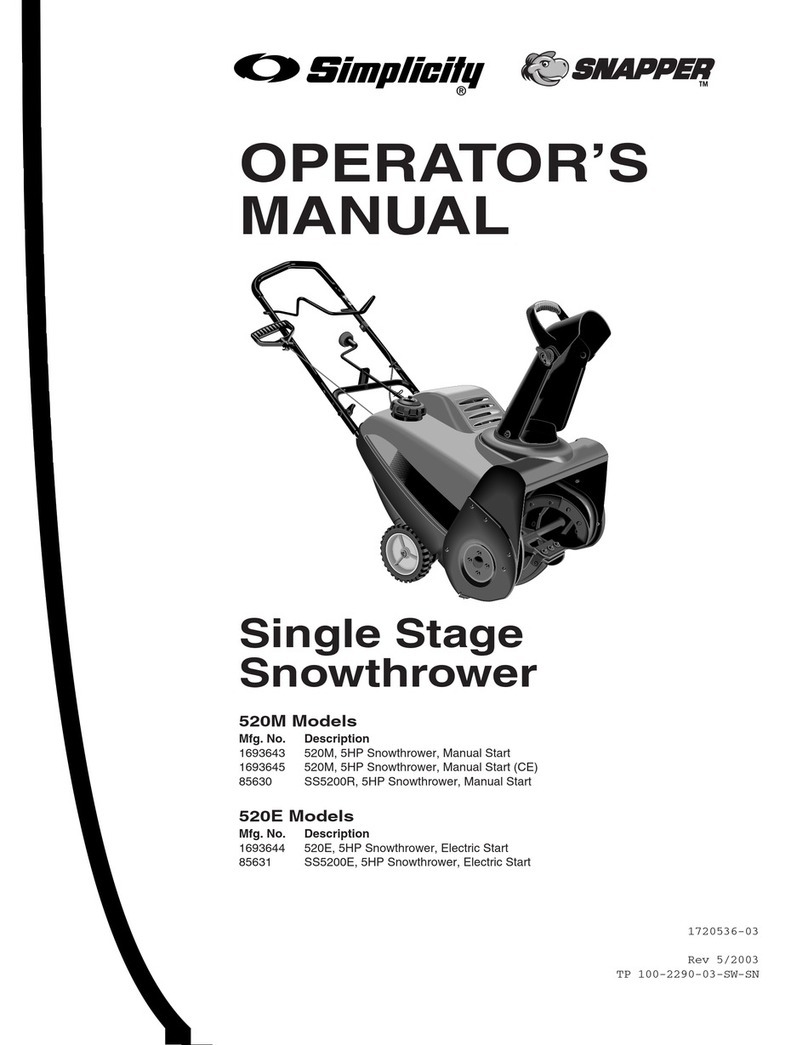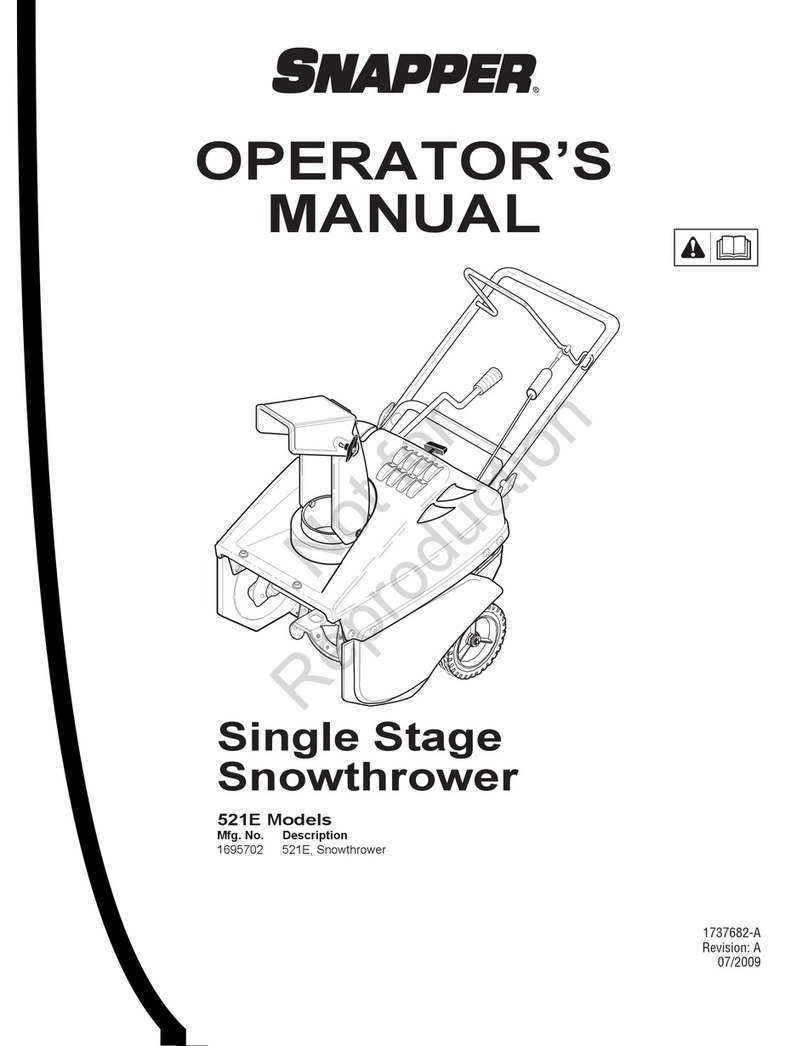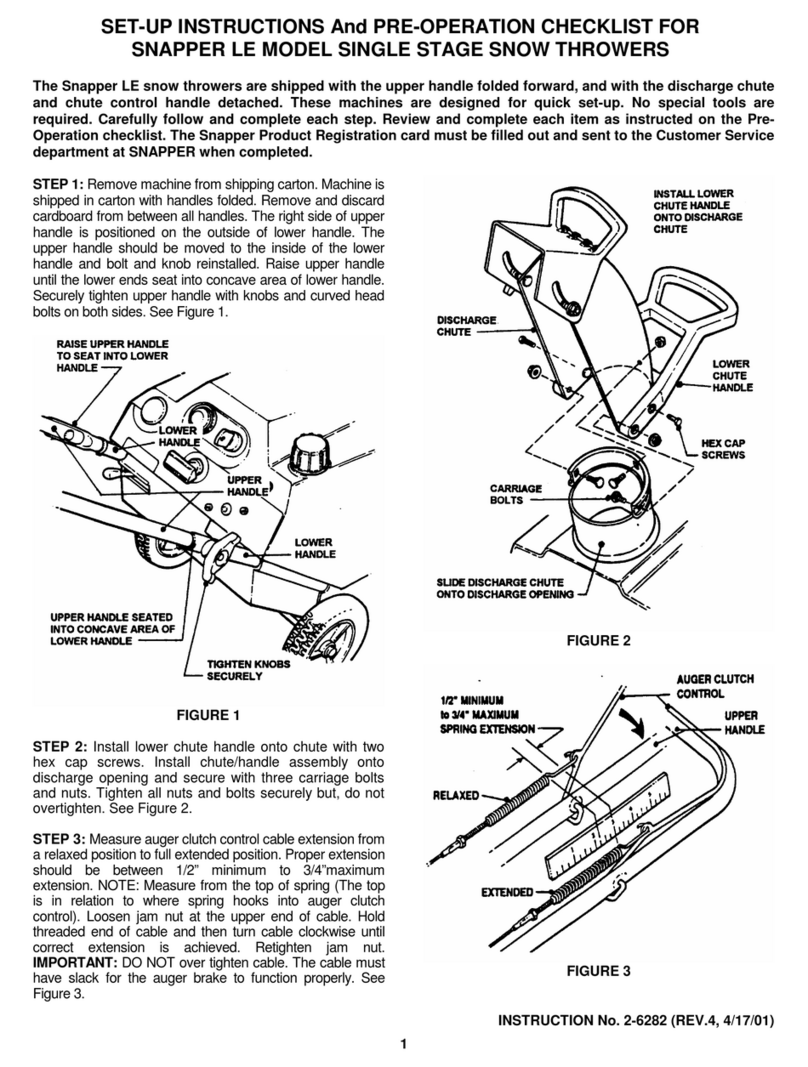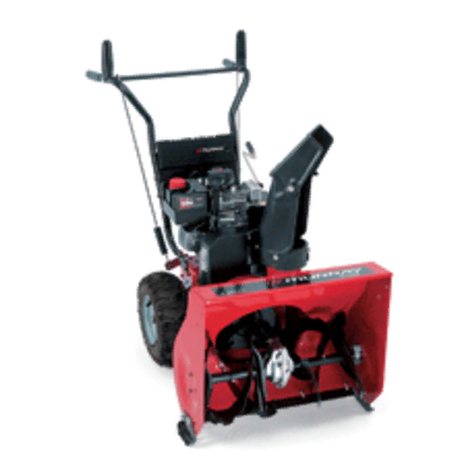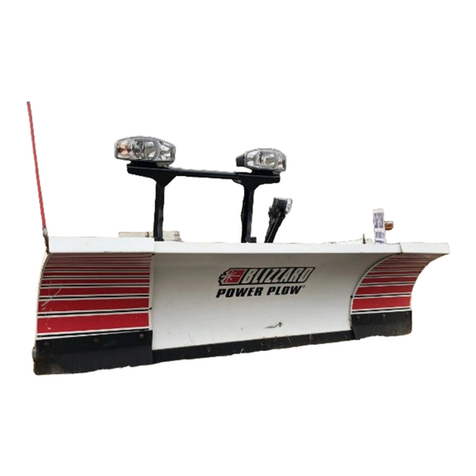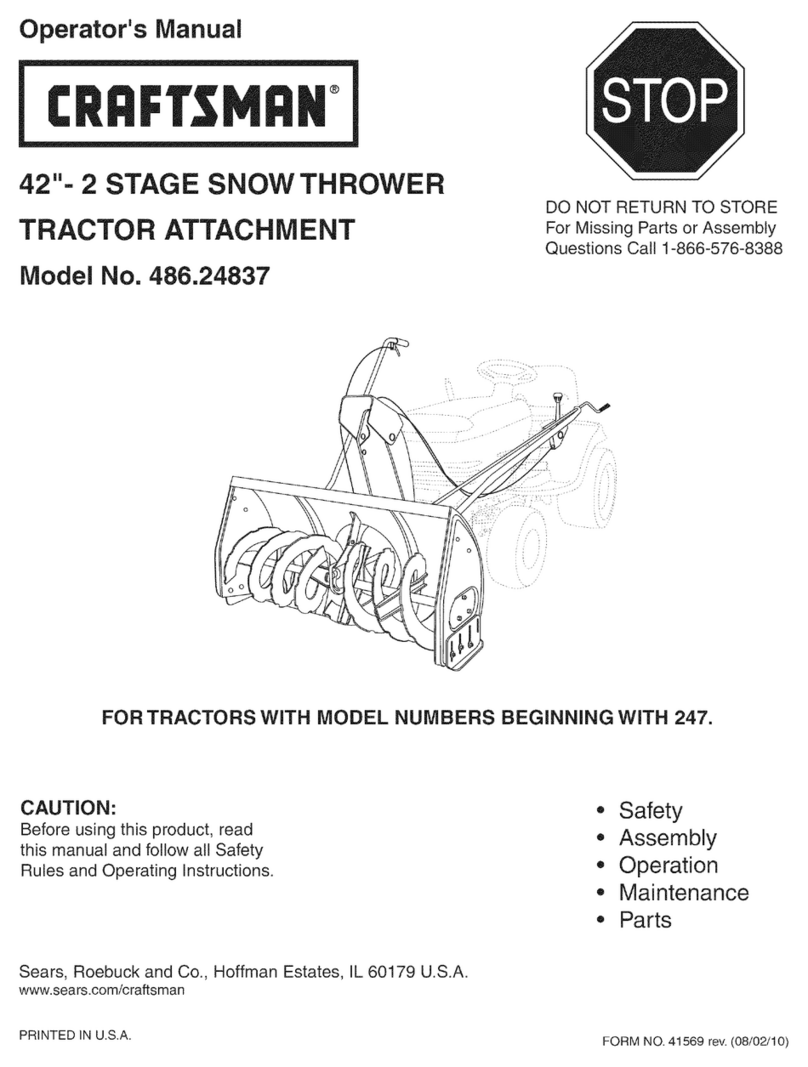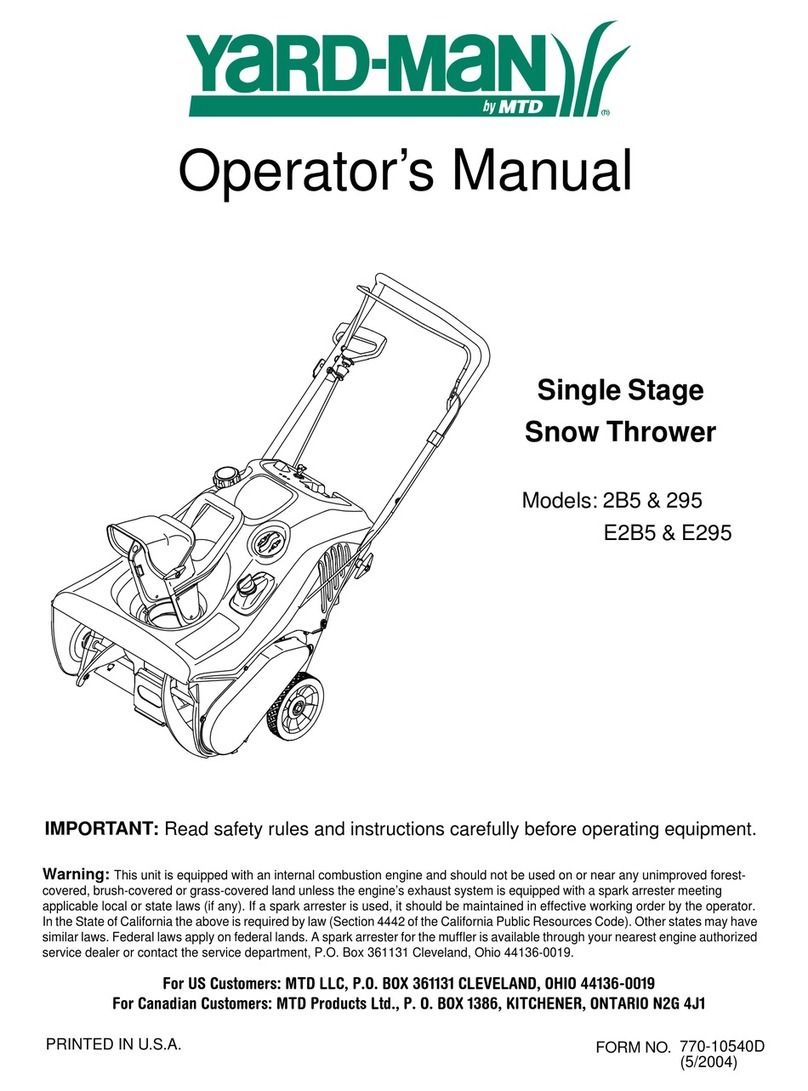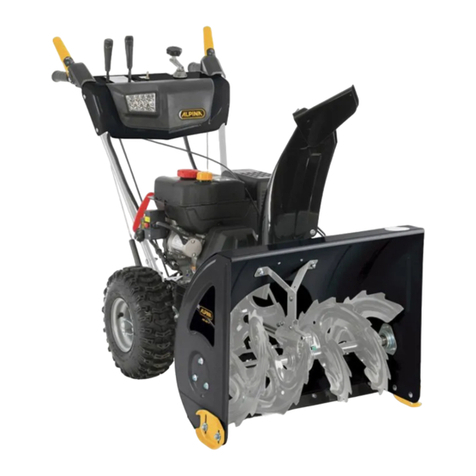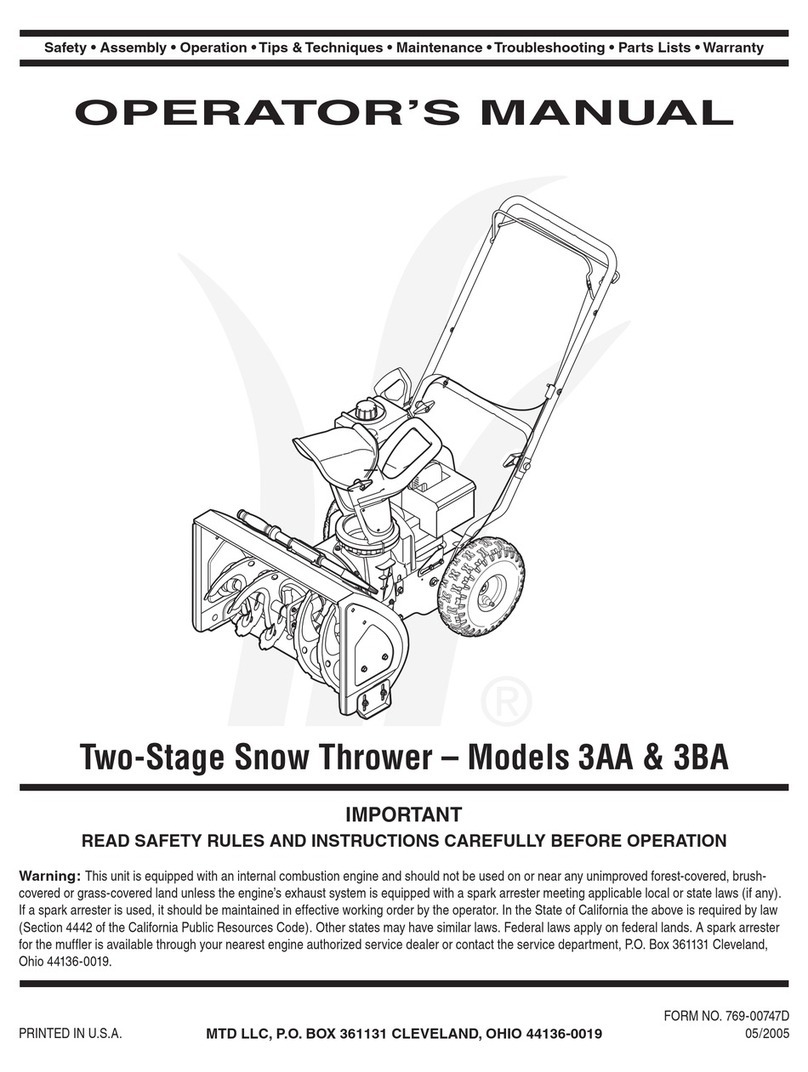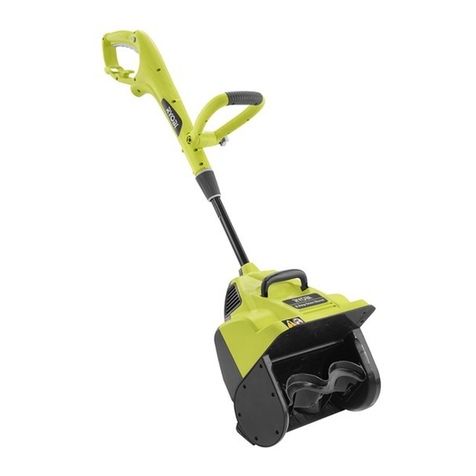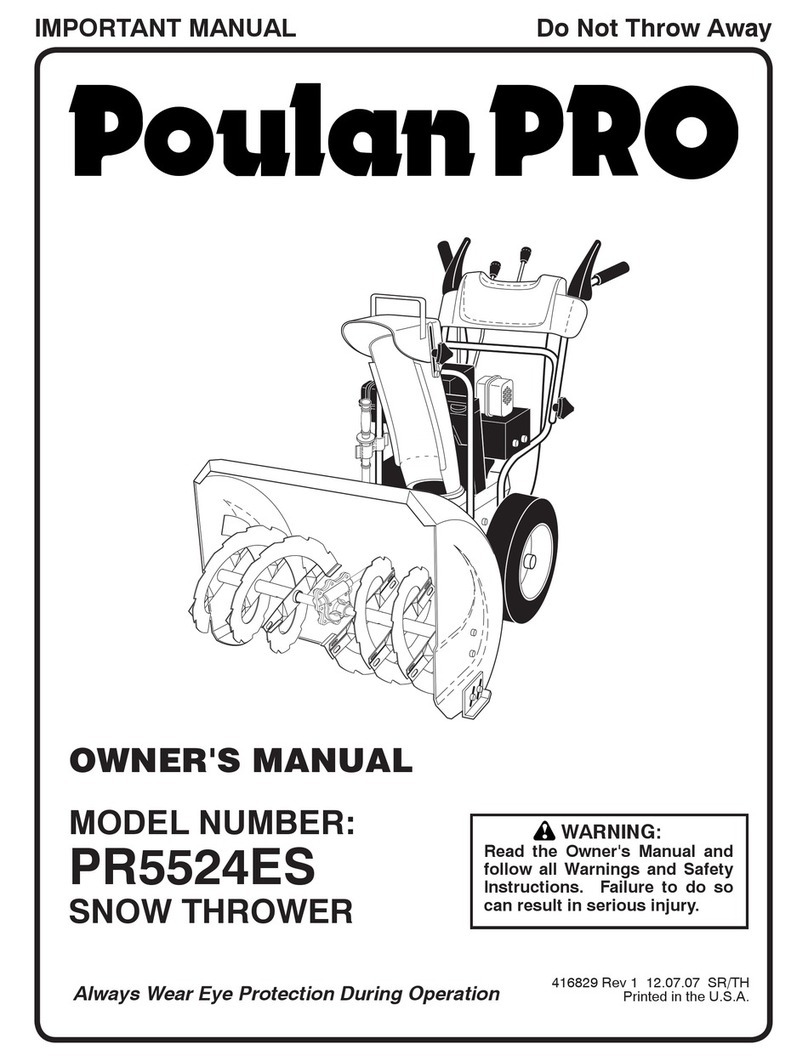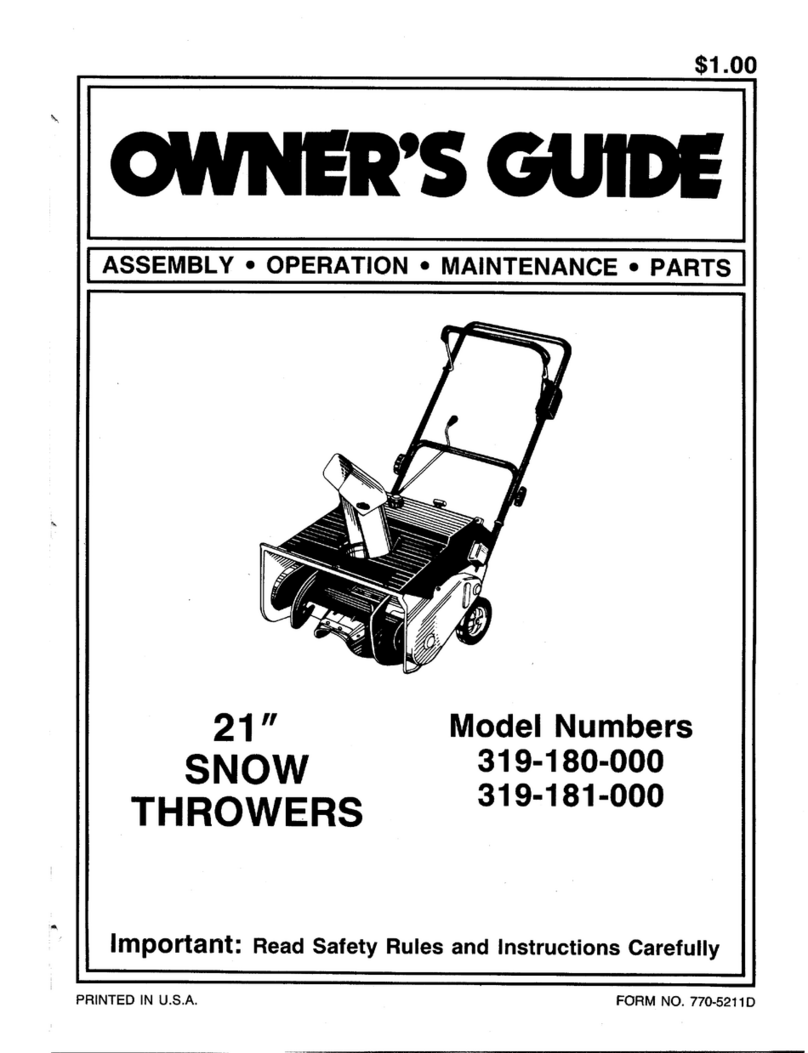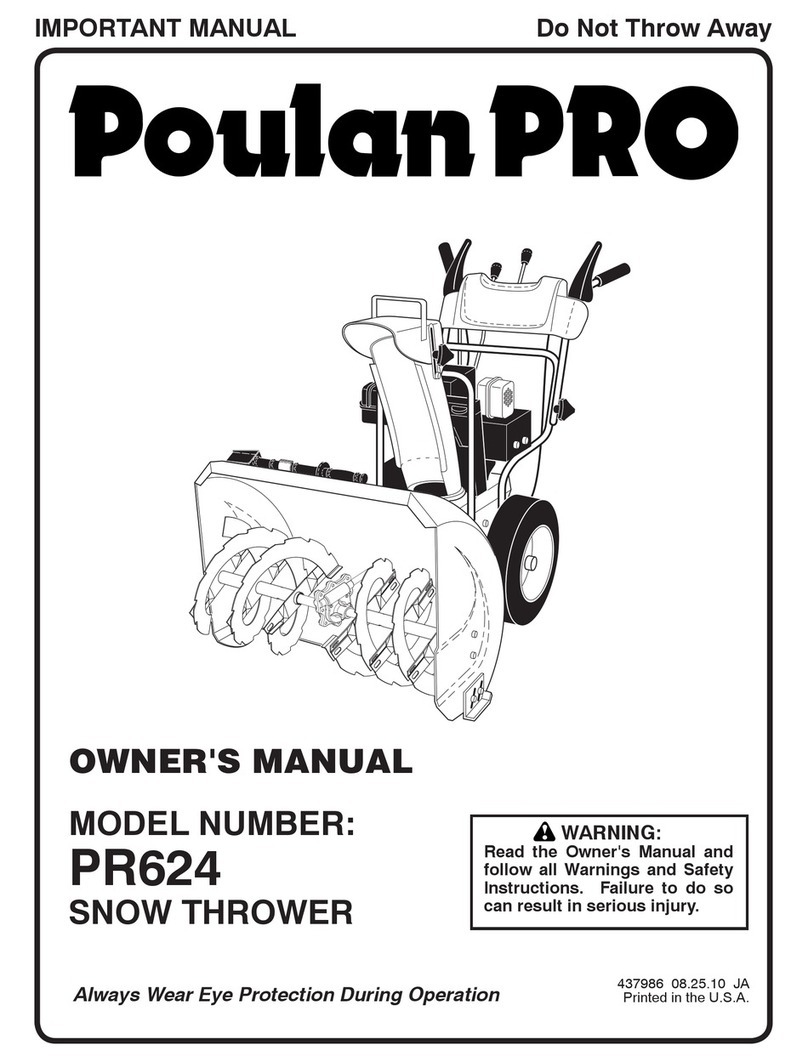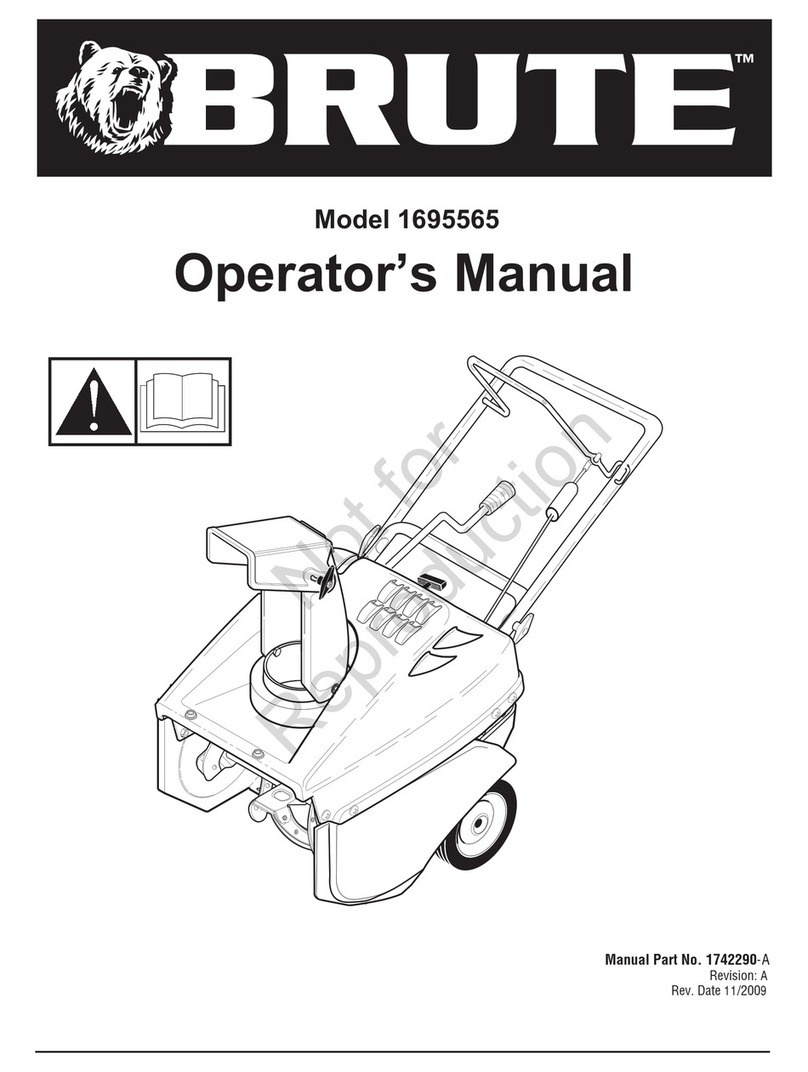
IMPORTANT SAFETY INSTRUCTIONS
WARNING: This powerful machine is capable of amputating hands and feet and can throw objects that can cause
injury and damage! Failure to comply with the following instructions may result in serious injury to the operator
or other persons. The owner of the snow thrower must understand these instructions and, furthermore, must
allow only persons who understand these instructions to operate snow thrower. Each person operating the
snow thrower must be of sound mind and body and must not be under the influence of any substance, which
might impair vision, dexterity, or judgment. If you have any questions pertaining to your snow thrower which
your dealer cannot answer to your satisfaction, call or write the Customer Service Department at SNAPPER,
McDonough, Georgia 30253. Phone: 800/935-2967.
PROTECTION FOR CHILDREN
Tragic accidents can occur if the operator is not
alert to the presence of children. Children are often
attracted to the machine and the snow removal
activity. Never assume that the children will remain
where you last saw them.
1. DO NOT allow children in the area when snow
thrower is being operated.
2. DO NOT allow pre-teenage children to operate
snow thrower.
3. ALLOW only responsible adults and teenagers
with mature judgment to operate the machine
and then only after being thoroughly instructed
and under the close supervision of an
experienced adult operator.
4. Keep the area clear of all persons, particularly
small children and pets.
5. Know how to STOP the snow thrower and
disengage the controls quickly.
PREPARATION
8. Survey the area to be cleared beforehand and
plan where snow is to be blown. Be prepared to
release auger/impeller clutch or to change
discharge chute direction quickly to discharge
away from windows, cars, buildings and
doorways to avoid property damage or personal
injury from hurled objects.
9. Use only approved extension cords and
receptacles in good condition and with sufficient
capacity to carry the current to the machine if
equipped with electric starting motors.
10. Handle fuel with extra care. Fuels are flammable
and vapors are explosive. Store only in an
approved fuel container. Never remove fuel cap
or add fuel with the engine running. Add fuel
outdoors only with the engine stopped and cool.
Clean spilled fuel and oil from machine. DO NOT
smoke. DO NOT run engine indoors.
PREPARATION
1. Warn everyone in advance to stay clear of area.
Keep especially watchful for children and pets
darting into area while operating.
2. Read, understand, and follow instructions and
warnings in this manual and on the machine.
Know the controls and the proper use of the
snow thrower before starting.
3. Data indicates that operators, age 60 and above,
are involved in a large percentage of snow
thrower-related injuries. These operators should
evaluate their ability to operate the snow thrower
safely enough to protect themselves and others
from serious injury.
4. Disengage all clutches and shift into neutral
before starting the engine (motor).
5. Wear adequate winter clothing including boots
which will give you maximum footing on slippery
surfaces. Exercise CAUTION to avoid slipping or
falling.
6. DO NOT wear loose fitting clothing that can get
caught in moving parts.
7. Before the first snow fall, check the area to be
cleared and remove all objects such as
doormats, sticks, toys, wires, rocks, etc., which
could be hurled or jam the snow thrower.
OPERATIONAL PRECAUTIONS
1. Before starting, make visual check to make sure
auger/impeller housing is clear and all guards
and shields are in place and tight.
2. DO NOT operate machine without proper guards
shields, deflectors, or other safety protective
devices in place and functioning properly.
3. Should the auger/impeller become clogged,
release the auger/impeller clutch control and, as
an additional precaution, STOP the engine
before attempting to unclog the auger/impeller
or discharge chute.
4. DO NOT attempt to unclog the auger/impeller or
discharge chute by reaching in with your hands.
Use the clean-out tool or similar implement to
unclog.
5. DO NOT attempt to unclog the auger/impeller or
discharge chute with the engine running. STOP
engine and remove key. Wait for all motion to
STOP.
6. STOP engine (motor) and remove key before
leaving the operator position for any reason.
DO NOT put hands or feet near or under rotating
parts. Keep clear of the discharge opening at all
times.
